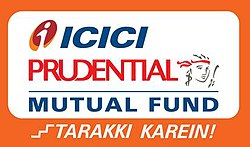Long Duration Debt Fund

1Y
3Y
SI
Nav
Risk

1Y
3Y
5Y
SI
Nav
Risk

1Y
SI
Nav
Risk

1Y
3Y
SI
Nav
Risk

1Y
3Y
5Y
SI
Nav
Risk

1Y
3Y
SI
Nav
Risk

1Y
SI
Nav
Risk

1Y
SI
Nav
Risk

1Y
SI
Nav
Risk

1Y
3Y
SI
Nav
Risk
Long Duration Debt Fund is a category of debt mutual fund that primarily invests in fixed-income securities with a macroeconomic weighted average portfolio duration of over 7 years. These funds are mandated to maintain this long duration regardless of the market scenario, making them susceptible to interest rate changes.
The portfolio usually comprises long-term government bonds, PSU debt instruments, and high-rated corporate debentures that mature over a longer horizon.
These funds are designed to maximize capital appreciation in environments with falling interest rates. The longer the duration, the more the fund's NAV responds to rate movements, benefiting investors when interest rates decline. However, this benefit comes with a trade-off: higher interest rate risk, which makes them more volatile in the short term compared to other debt fund categories.
Who Should Consider This Fund
Long-Duration Debt Funds are the ideal choice for experienced investors with a long-term investment horizon of 7-10 years or more, who can manage short- to medium-term volatility. These investors often aim to create long-term wealth by strategically navigating interest rate cycles. Those expecting a prolonged period of falling interest rates may find these funds particularly rewarding.
This fund type is also suitable for achieving long-term financial goals such as retirement planning, wealth preservation, or legacy planning. However, due to the fund's sensitivity to potential rate hikes, it may not be appropriate for conservative investors or those needing short-term a
Risks and Return Potential
The primary danger associated with Long Duration Debt Funds is their vulnerability to changes in interest rates. An increase in interest rates could cause sudden drops in the net asset value in the short term. Additionally, these funds may also be subject to duration risk (the risk associated with the length of time before the instruments used in the fund mature), which further increases market volatility.
That said, over a long investment cycle, these funds have the potential to deliver superior risk-adjusted returns, especially when the market enters a downward rate cycle. Historically, they have delivered annualized returns in the range of 7% to 9%, depending on the timing of rate cuts and the expertise of the fund manager.
From a taxation standpoint, gains from these funds are treated as long-term capital gains (LTCG) if held for more than 3 years, with indexation benefits, making them tax-efficient in the long run.
Benefits of Long-Duration Debt Funds
The primary benefit of Long Duration Debt Funds is their high sensitivity to interest rate movements, allowing investors to earn strong capital appreciation during phases of declining interest rates. Since they focus on long-term instruments, these funds also provide portfolio stability through exposure to sovereign-backed and top-rated securities.
Another significant benefit is that they are highly tax-efficient. When held for more than 3 years, indexation can lead to substantial tax savings on capital gains, making them more tax-efficient than fixed-income instruments in after-tax terms.
Additionally, these funds are usually actively managed, enabling fund managers to constantly adjust the portfolio in line with economic trends and maximize returns without taking excessive credit risk.
Things to Keep in Mind Before Investing
Long-term investors must determine if they have the necessary tolerance to endure short-term price volatility. These funds are not intended for quick profits and may underperform during periods of rising interest rates.
A successful trader or financial advisor who can guide you, especially in timing the market for these funds, is essential.
Most importantly, analyze the fund manager's previous performance because active duration management is fundamental in navigating interest rate trends. Always check the portfolio for the number of high credit quality instruments, note the repayment timelines, and review the fund's expense ratio, as these factors can significantly impact net returns.
Get In Touch
Interested in exploring more about JezzMoney Mutual Fund Distributors Software? Submit the form, and we will respond quickly.
Get Expert Advice on Investment in Mutual Funds!
- Certified mutual fund distributors around India will reach out to help you build your future.
- Connect with trusted mutual fund distributors and find them from your city and pincode area.
- JezzMoney is only the mediator to help you connect with these certified professionals.
- It is your obligation to gather accurate information when you receive contact from our platform.